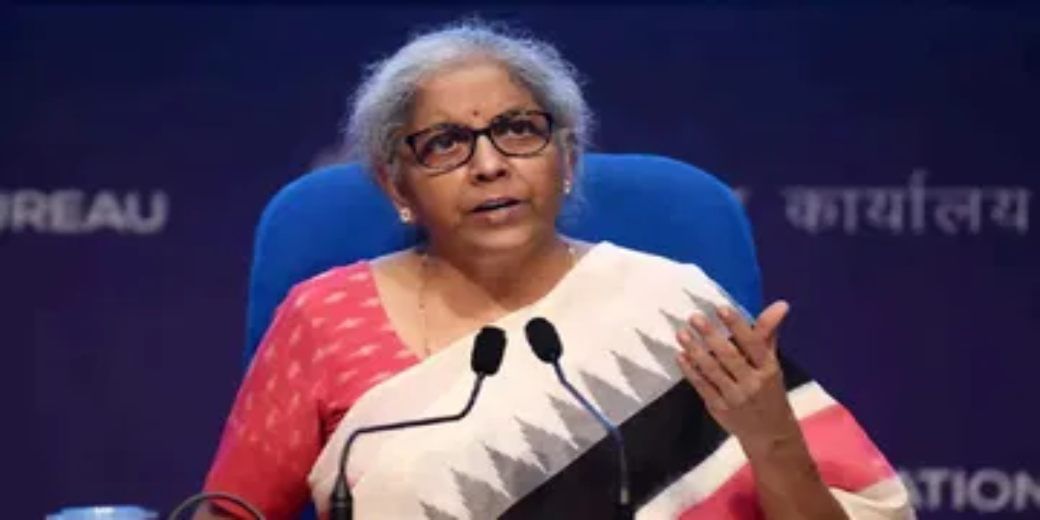Finmin may go for 5.3% fiscal deficit in FY25: Economists
Eight of the projections by forecasting agencies expect the fiscal deficit goal to be 5.3% of the GDP

Fiscal deficit, the crucial number that signals the total borrowings required by a government in a particular year, could be set at 5.3% for the fiscal year FY25, the interim budget for which is due on February 1, a Business Standard analysis has reported. The key to the analysis is a slew of projections by economists and expert agencies.
The fiscal deficit target for the current financial year was set by the Centre at 5.9% of the GDP.
The report has stated that eight of the projections by forecasting agencies expect the fiscal deficit goal to be 5.3% of the GDP. Two other agencies have put it at a tad higher – 5.4%.
Those agencies that think 5.3% of the GDP target is more likely include HDFC Bank, ICRA, DBS Bank, India Ratings, Bank of America, Elara Capital, Barclays, Goldman Sachs. The votaries of 5.4% target are Kotak Mahindra Bank and IDFC Bank.
Economists have also said that they expect that the capital expenditure incurred by the government over the past two years could moderate a bit.
“We expect the central government to announce a fiscal deficit target in the range of 5.2-5.4% of the GDP (with 5.3% of GDP as our base case) in FY25, given their medium-term fiscal consolidation target of reaching 4.5% of GDP by FY26,” Goldman Sachs said.
Incidentally, while the fiscal deficit target for FY24 faces challenges from weaker-than-projected nominal GDP growth, shortfall in revenue from disinvestment and elevated subsidy payouts, it is assisted by the tailwinds of higher tax and non-tax revenues and savings by several ministries.
The experts of Barclays also think that higher tax and non-tax revenues could amply offset any shortfall in disinvestment revenue. The net outcome: The Centre could coast to its fiscal deficit target of 5.9% of the GDP in the current financial year.
“We expect the FY24-25 budget to set a deficit target of 5.3% of the GDP. This would imply, in level terms, a deficit of Rs 17.7 trillion in FY24-25, broadly similar to our forecast for FY23-24 (Rs 17.8 trillion),” said Barclays.
There are differences of opinion too, largely due to political compulsions. The chief economist of Kotak Mahindra Bank Upasna Bhardawaj said that over the medium term, the Centre has to contain fiscal consolidation and simultaneously improve spending quality and has to balance it against big committed expenditures.
“The FY25 interim budget could additionally include few populist measures, while targeting slower capex growth, sharper-than-usual fiscal consolidation and keeping borrowings in check. We pencil in FY25E gross fiscal deficit to GDP at 5.4 per cent,” she added.
The vote on account, which basically consists in getting the approval of the legislation for meeting temporary expenditure till the new government presents its full budget, will also weigh in. It could result in a peek into a broad assessment of the capital expenditure, said economists.
“The government has been prioritising capital spending, especially for roads, railways and defence. We expect this focus to continue, albeit at a moderate pace. We project FY25 capital expenditure to rise 20 per cent. We also do not rule out trimming of the budgeted allocation for the interest free 50-year loan to the states from the Centre by Rs 300 billion,” read a report of Elara Capital Securities.
Care Ratings thinks there might be a 10% hike in the capex of the government.
“We expect the government to stick to its capex target of Rs 10 trillion in FY24 and raise it further by Rs 10 per cent to Rs 11 trillion in FY 25,” said Care Ratings.
Aditi Nayar, the chief economist at Icra Ratings thinks the finance ministry would be rather careful with disinvestment targets in FY25. In the past few years, it has been unable to achieve its targets and a yawning shortfall at the end of the year upsets budget calculations.
“For FY24, the Centre had set a disinvestment target of Rs 51,000 crore but has only been able to meet around one-fifth (Rs 10,050 crore) of it so far. Strategic sales of a host of central public sector enterprises (CPSEs) are in the pipeline for completion in the current fiscal. Icra anticipates a shortfall of Rs Rs 36,000 crore in the disinvestment target of FY24,” said Nayar.
On the expenditure front, some economists believe support measures to address near-term risks for rural/farming communities could be announced.
“Targeted support by way of transfers to make up for output losses due to weather, higher farm insurance outlays, boost to disbursements towards rural employment schemes, irrigation facilities, might be tapped,” said Radhika Rao, senior economist, DBS Bank.